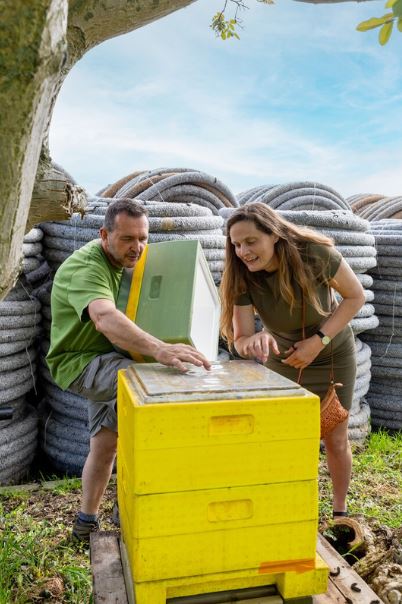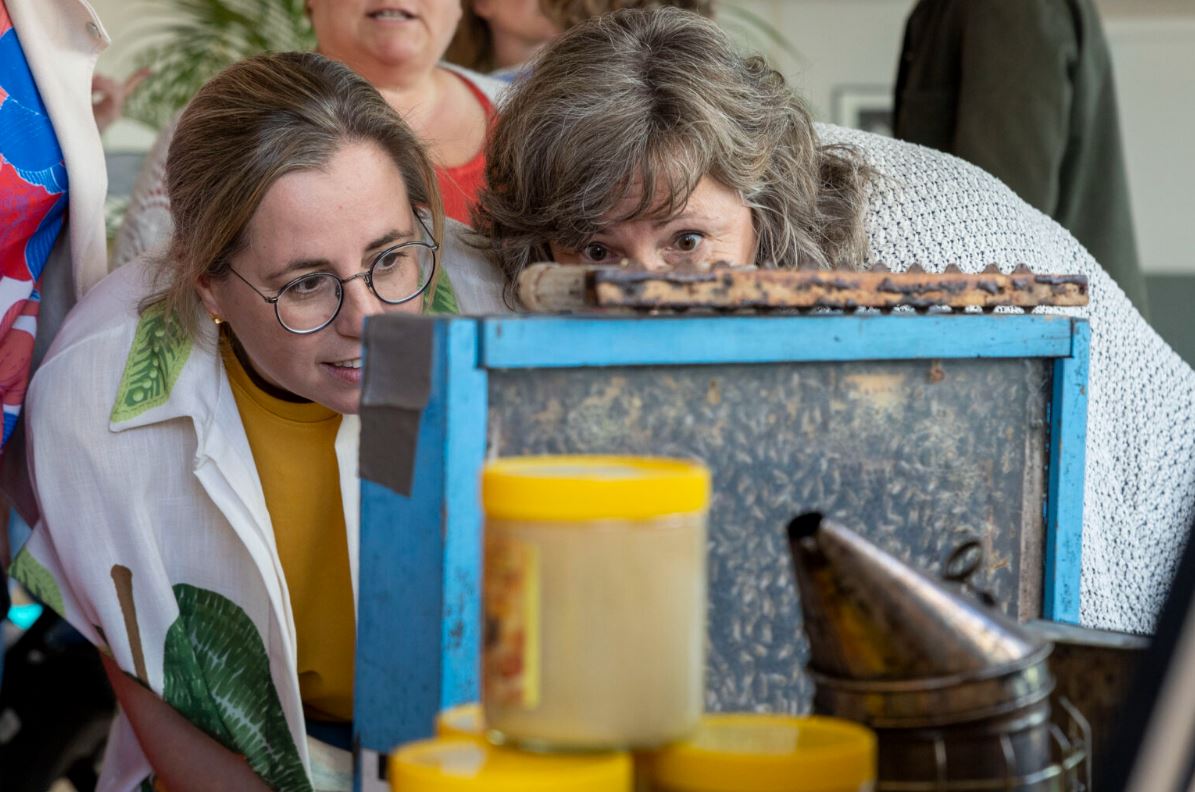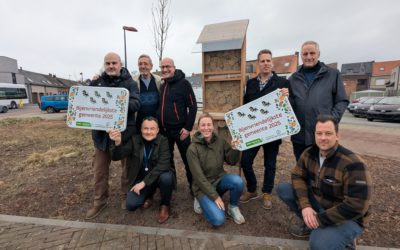In the category under 40,000 inhabitants of the 2025 election of the Bee-Friendliest Municipality, Kontich and Lint won together.
LeaseBees
The project
Bees no longer have healthy food and safe housing. They live and work in a toxic and dangerous environment and are dying. We are incredibly dependent on bees. Around 80% of all crops depend on pollination by insects. Bees do most of the work. Without pollination, we would no longer have coffee, fruit, nuts, chocolate and vegetables.
LeaseBees wants to do something about this, together with you: building and caring for bees and improving local biodiversity.
We scan the environment to determine the current situation. This scan reveals which bees live there and what food is already available in the form of trees, plants and shrubs. This tells us exactly which bees we can set up the LeaseBees land for. This information provides a good basis for the next steps.

Project location
Contribution(s)
Project costs
Participant(s)

LeaseBees works closely with the company, healthcare institution or government agency that calls on their expertise.
LeaseBees also works with passionate beekeepers who want to contribute to improving biodiversity. Beekeepers can become bee keepers at LeaseBees and thus play a crucial role in our mission.
How are the criteria of the objective met?
Bed & Breakfasts for wild pollinators
- Provide suitable habitats for wild pollinators, both in terms of nesting places (bed) and in terms of food plants and vegetation (breakfast);
- Diversify vegetation to include a range of plants (native species adapted to local pollinator populations) that bloom and provide abundant sources of pollen and nectar throughout spring, summer and fall (“bee pastures”);
- Create appropriate nesting places (piles of wood or sand, insect hotels, …), and permanent spots of bare soil for ground-nesting pollinator species;
- Create/enhance corridors to maintain the ecological continuity across the different types of green spaces and allow pollinators to move from one place to another.
Possible initiatives in which the project is involved :
Long-term maintenance
After constructing the habitat, we take care of the bees’ welfare and maintain the habitat.
Our eco-gardeners visit on average twice a year. More is not necessary, because a bee garden must look well-kept, but requires little maintenance. In the first year, during this maintenance, we also replant any plants that did not survive. We grow food in such a way that the plants reinforce each other as an ecosystem.
We do not need to use pesticides to keep everything tidy; nature does that for us!
Benefits
LeaseBees works with the company to determine its wishes and budget, translating these into practical plans, costs and a visual presentation.
The trees are delivered by crane, the shrubs are non-toxic and the plants are organically grown. The hives are splinter-free and have the right dimensions for the specific bees in your area.
If you and your colleagues would like to learn how to care for bees or learn more about bees, we offer several workshops and training courses.
